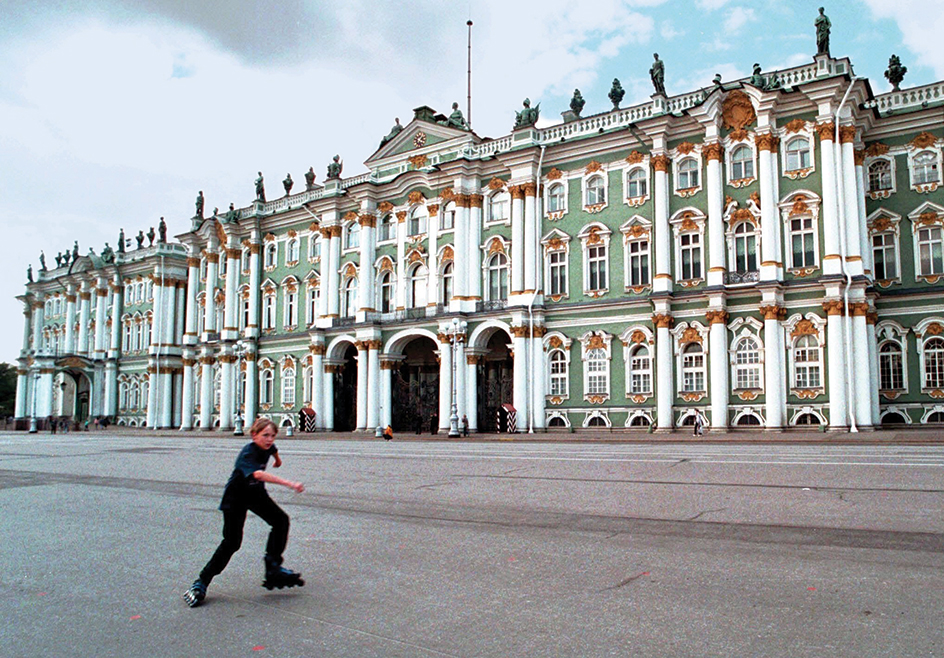Hermitage is a famous art museum that stands in the center of St. Petersburg, Russia. The complex of buildings forms the largest museum in Russia. Part of the collection is housed in the former Winter Palace, once the home of the czars of Russia and a building important in Russian history.

The official name of the museum is the State Hermitage Museum. The Hermitage extends about 1/2 mile (0.8 kilometer) along the banks of the Neva River. The museum has almost 400 rooms, with about 3 million works of art from different civilizations, historical periods, countries, and peoples. The Hermitage is internationally known for its collection of European old master paintings. It also has outstanding collections of classical antiquities as well as wide-ranging collections of Russian art and the art of the Far East.

Italian architect Bartolomeo Rastrelli designed the exterior of the Winter Palace in the late Baroque style of the 1700’s. The palace was built between 1754 and 1762 on a site where several earlier palaces had stood. The interior was designed during the late 1700’s and early 1800’s, primarily in the Classical style.
Czar Peter III became the first resident of the Winter Palace. After overthrowing the czar in 1762, Empress Catherine the Great lived there until her death in 1796. Catherine founded the art collection when she imported about 225 paintings by Dutch and Flemish artists in 1764 to decorate rooms in the palace. Catherine had a long, narrow building, called the Little Hermitage, built along the west side of the Winter Palace from 1764 to 1767. The building soon housed much of the imperial art collection. From the mid-1700’s to the mid-1800’s, several more buildings were added to the palace complex.
During the October Revolution of 1917, the Hermitage was the headquarters of the provisional Russian government. Between 1917 and 1922, the Winter Palace and the other Hermitage buildings were converted into a state museum.
